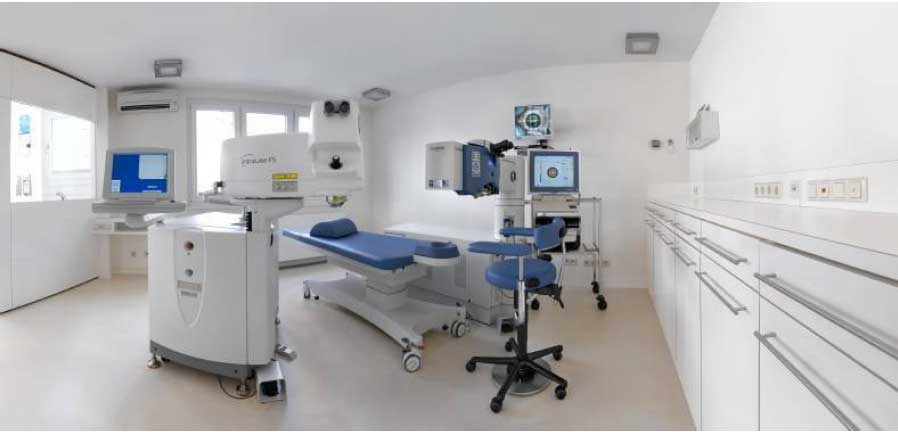La Trans-PRK (Transepithelial PRK) est une amélioration de la PKR.
From a purely technological point of view, this is not strictly speaking a revolutionary technique, but from a practical point of view and for patients, provided certain rules and indications are respected, it can become one and radically change our day-to-day approach to refractive surgery.
Pour comprendre ce qu’est la Trans-PKR il faut déjà connaitre son ancêtre : la PKR.
Grosso modo toutes les opérations de chirurgie réfractive peuvent se diviser en 2 familles :
1- Surgeries involving the creation of a flap in the patient's cornea:
Classic Lasik type (since the beginning of the 1990s): the flap is made with a microkeratome - a sort of micro-surgical plane
or Femtolasik: the flap is made with a first laser called femto second (since the 2000s)
In both cases the difference only concerns the tool that will make the flap but the Excimer laser that will treat the visual defect (myopia, astigmatism, etc.) is identical in all cases.
2- Surface Excimer Laser Procedures:
There is no flap, no cutting, but a much more superficial and less aggressive peeling of the epithelium for the cornea.
PRK is the oldest technique (since 1987), it is currently experiencing a resurgence of interest for various reasons:
There is no corneal flap, no cutting, therefore much fewer serious complications which are mostly due to problems in the creation of the flap. On the other hand, the latest generation lasers give less haze (scar fog) and therefore allow a faster visual recovery than in the past.
This is sometimes difficult for patients to understand, although the PRK treatment is more superficial and less deep than in Lasik (since there is no flap cut in the cornea) it is more painful postoperatively and visual rehabilitation is longer. This is linked to the time needed for the surface epithelium, which must be removed in PKR/TransPKR, to grow back naturally.
The main disadvantage is therefore this post-operative pain (the operation itself is almost painless) but the pain begins 1 hour later and can last 24 to 48 hours.
The healing phenomena (more or less significant haze) which can slow down or even reduce the visual result are also improved today by the new treatment profiles of the latest generation lasers.
The placement of a bandage lens postoperatively and/or the use of Mitomycin eye drops can alleviate postoperative inconveniences and thus broaden the indications for PKR.
Important clarification: the laser which corrects the visual defect (myopia, astigmatism, hyperopia or presbyopia) is still the same as in Lasik: it is only the preliminary preparation which will change according to the techniques.
Let's forget the other surface techniques such as Lasek (lasek and not lasik) which is no longer offered today.
Let's also set aside epi-lasik which is also less practiced and which is in fact a variant of PKR whose name "epi-Lasik" can sometimes make the patient believe that he will benefit from a sort of Lasik which is absolutely not the case: it is the equivalent of PKR but which still has some convinced supporters to this day.
3- Now let's talk about the Trans-PKR:
In a "normal" PKR, the epithelium must be scraped or peeled superficially:
-This can be done mechanically with a spatula or a small rotating brush,
-or with alcohol, which still involves some direct manipulation of the eye with surgical instruments and the prior placement of an eyelid retractor.
In the 90s, it was already proposed to get rid of this epithelium by an initial burst of laser pulses called PTK prior to PKR, but this was quite difficult to systematize and little used in practice.
Trans PKR is a technique today validated by numerous international studies and proposed on the Amaris laser marketed by the German firm Schwind, inventor of this technique.
It takes up this principle of vaporization of the epithelium by laser: it is therefore the same excimer laser which will vaporize the epithelium and resurface the corneal surface in a single step to correct the visual defect, all without the slightest contact with the patient's eye.
The advantages compared to a classic PKR are clearly established and appreciable for the comfort of the patient because while maintaining the safety aspect of PKR, we will be able to significantly reduce the undesirable effects (less pain and faster recovery).
Prices for TRANS PKR:
From 2,200 euros with SmartPulse option on the Amaris 1050 RS laser.
